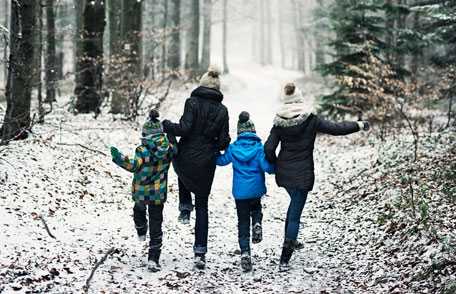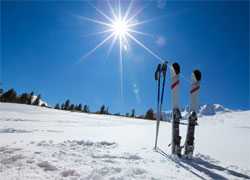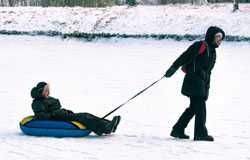Cold-Weather Travel
 Winter time is the perfect time for ski trips, cabin stays, and other snowy activities. Whether you’re hitting the slopes in Switzerland or planning a getaway to a lodge in Canada, learn how to stay warm and protect yourself from cold weather illness and injury while traveling.
Winter time is the perfect time for ski trips, cabin stays, and other snowy activities. Whether you’re hitting the slopes in Switzerland or planning a getaway to a lodge in Canada, learn how to stay warm and protect yourself from cold weather illness and injury while traveling.
What Are the Risks?
Travelers to cold climates face many risks. Even in mild climates, wind and rain can produce cold-related injuries in temperatures as warm as 50°F, and swimming or diving in cold water can make you lose your ability to stay afloat in less than 15 minutes.
Hypothermia
Hypothermia happens when your body temperature drops below 95°F. Mild hypothermia can make you feel confused, and you may not think anything is wrong until it is too late. Being too cold can also cloud your judgment and cause you to make mistakes, which can be deadly.

Learn how to protect yourself from illness and injuries.
Early symptoms of hypothermia include shivering, feeling tired, being clumsy, and being confused. As your body loses more heat, the shivering may stop, your skin may turn blue, the pupils of your eye may expand, your pulse and breathing may slow, and you may pass out.
Frostbite
Frostbite happens when a part of the body freezes, damaging tissue. Fingers and toes are most at risk. If the tissue can’t be saved, the body part may need to be amputated. Warning signs of frostbite include numbness or tingling, stinging, or pain where you are most exposed to the cold. Frostbite is treated by warming the body part in warm water.
Modern clothing and equipment have decreased the risk for adventure travelers, but frostbite still occurs after accidents as a result of poor planning and in severe, unexpected weather.

Wear warm clothing in several loose layers.
What Can You Do?
When traveling in cold climates, follow these tips to protect yourself from illness and injuries such as hypothermia and frostbite.
- Wear warm clothing in several loose layers.
- Wear gloves to protect your hands, and a hat or hood to protect your head.
- Wear waterproof shoes that have good traction in wet conditions.
- Wear cold-weather gear that does not restrict your movement or block your eyesight.
- Use safety equipment and gear that will keep you warm and dry when engaging in adventure activities in cold weather or around cold water.
Fun-filled adventures in the snow don’t have to end in a trip to the emergency room. With careful preparation and planning, you can stay safe, warm, and dry in chilly temperatures.
- Page last reviewed: February 27, 2017
- Page last updated: February 27, 2017
- Content source:
- National Center for Emerging and Zoonotic Infectious Diseases, Division of Global Migration and Quarantine
- Page maintained by: Office of the Associate Director for Communication, Digital Media Branch, Division of Public Affairs




 ShareCompartir
ShareCompartir